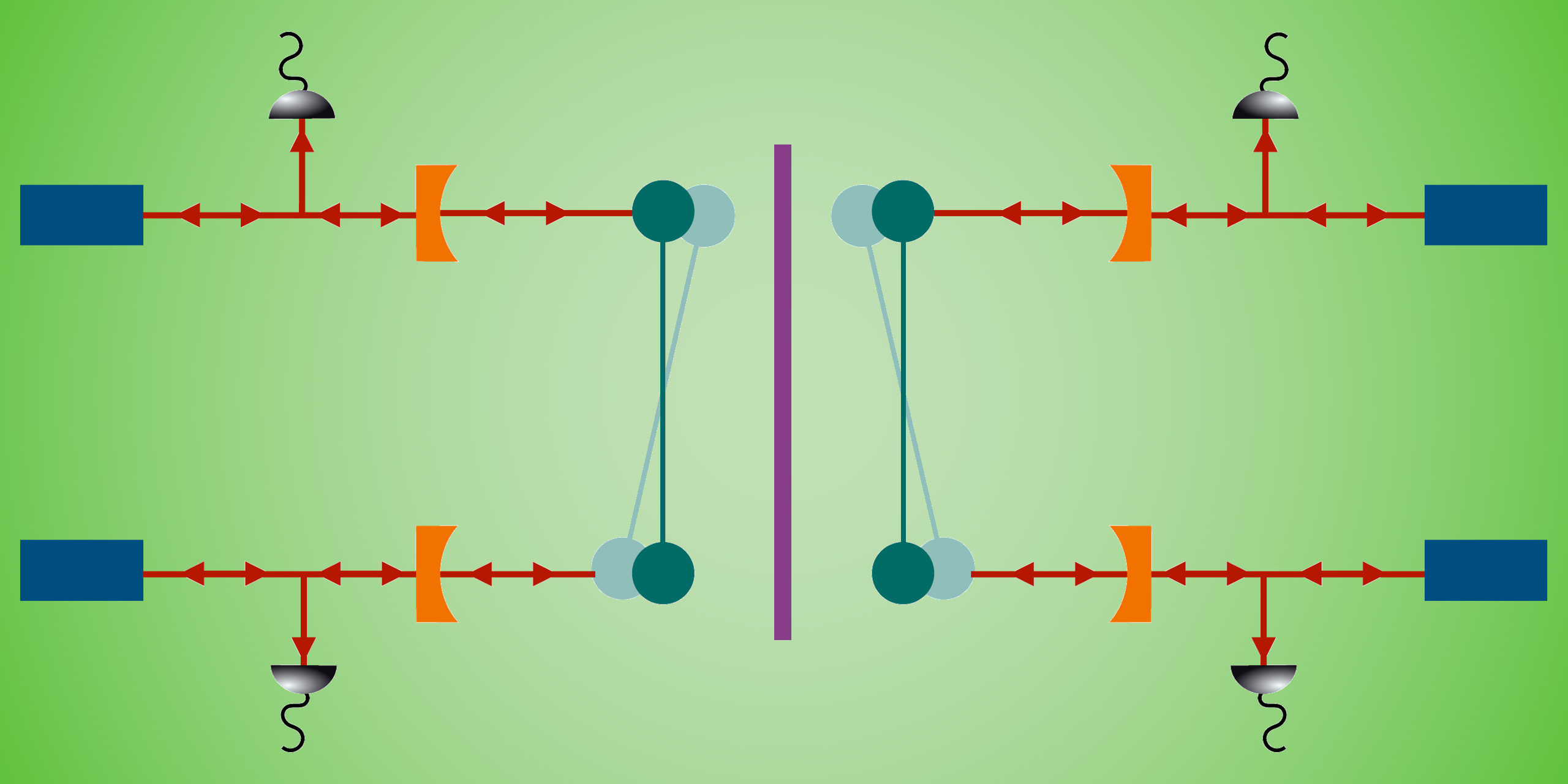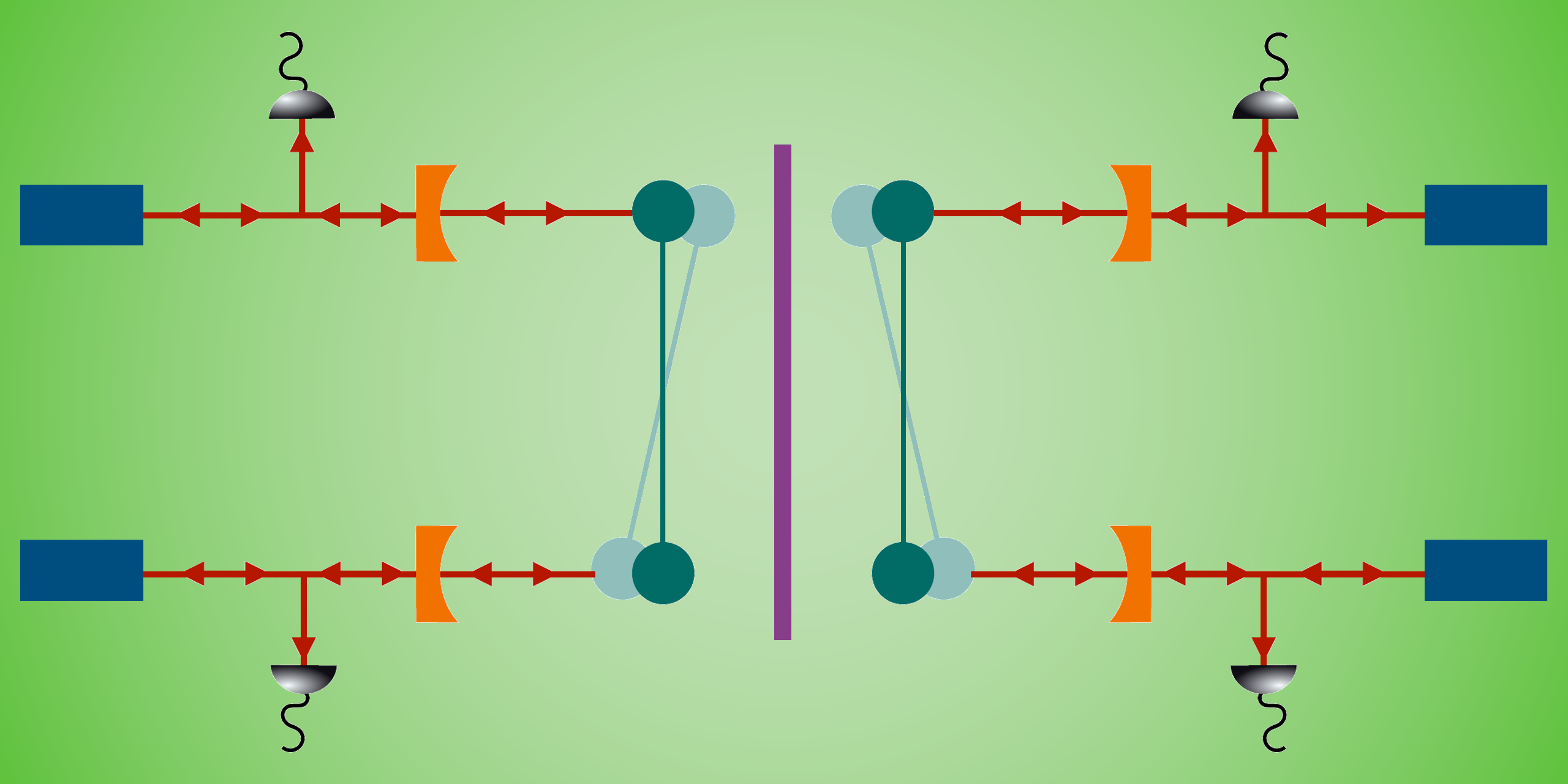Quantum Gravity Gets a New Test
Gravity might be the most familiar of the four fundamental forces, but it is by far the weakest. This feebleness has prevented researchers from exploring the intrinsic properties of gravity and, in particular, from determining whether the force is classical or quantum in nature. Such a determination is long sought after because it could help physicists reconcile the theory of gravity with the quantum descriptions of the other fundamental forces. That goal might now be one step closer thanks to a radically new experimental strategy devised by Ludovico Lami at the University of Amsterdam and his colleagues [1].
Previously proposed experiments to test the “quantumness” of gravity have focused on entanglement—a purely quantum effect in which the properties of objects are correlated in a nonclassical way. In those experiments, two widely separated, heavy objects are placed in highly delocalized quantum states, meaning that their wave functions are spread out over a large volume of space. Theorists predict that, if gravity is intrinsically quantum, the mutual gravitational attraction between the two objects could cause them to become entangled (see Synopsis: A Test of Gravity’s Quantum Side). “The main problem with these previous proposals is that highly delocalized states of heavy objects are very challenging to create,” says Lami, the lead researcher of the new work. Moreover, entanglement is incredibly fragile and can be difficult to detect.
The strategy suggested by Lami and his colleagues avoids these issues because it does not require the production of highly delocalized quantum states or the generation and detection of entanglement. As a concrete example of their approach, the researchers consider an experiment involving two torsion pendulums—wire-suspended rigid bodies that rotate back and forth as their wires twist. These bodies are shaped like dumbbells, with each end weighing less than a gram and constituting one half of an optical cavity—the other half being a fixed mirror. As the pendulums oscillate, they change the size and therefore the resonant wavelength of each cavity. This change can be detected by shining laser light into the cavities and then measuring the intensity of the resulting interference pattern.
The two pendulums are coupled through their mutual gravitational attraction by placing them near each other with their equilibrium orientations in parallel. To ensure that gravity is the dominant force between the pendulums, a shield is positioned in the middle to suppress any potential electromagnetic and optical interactions. Additionally, the distance separating the pendulums is carefully chosen so that their gravitational attraction is always much stronger than the Casimir force between them and the shield.
Using their coupling to the optical cavities, the pendulums are first driven to their ground states, in which they are at rest, and then placed in randomly selected coherent states, in which they oscillate with a well-defined amplitude. Next, they are left to evolve under gravity for a specific time. The expected states of the pendulums at the end of that time are computed, assuming the gravitational interaction is quantum in nature. A tiny nudge that would put those computed states back into the ground states is then given to the pendulums. Finally, after applying that nudge, the pendulums are checked to see if they are indeed in their ground states. This procedure is repeated many times, and the probability of finding the pendulums in their ground states following these steps is determined. If this probability exceeds an upper bound calculated for classical gravity, it indicates that gravity is not classical.
To compute that upper bound, Lami says that his team “brought in and honed some heavy mathematical machinery from quantum information theory” and, in particular, “used tools from the theory of entanglement manipulation.” A key assumption behind this calculation—that also underpins the previous, entanglement-based protocols—is that, for classical gravity, the gravitational interactions between quantum objects can be described by a sequence of local quantum operations assisted by classical communication. However, that assumption is a subject of hot debate. Another potential issue with the new proposal is that the experiment requires long coherence times, torsion pendulums that lose little energy as they oscillate, and an ultracold environment. Nevertheless, the researchers hope their work will open a new experimental avenue in the investigation of the interplay between gravity and quantum physics.
Andrea Mari and David Vitali, two quantum physicists at the University of Camerino, Italy, think that the suggested approach is a promising alternative to the more conventional, entanglement-based protocols and is, in principle, feasible with existing or near-future technology. They stress that, ultimately, experimentalists will decide which scheme is the best and the most convenient.
–Ryan Wilkinson
Ryan Wilkinson is a Corresponding Editor for Physics Magazine based in Durham, UK.
References
- L. Lami et al., “Testing the quantumness of gravity without entanglement,” Phys. Rev. X 14, 021022 (2024).





